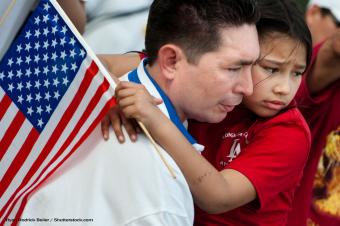Family Reunification
Family Reunification
Recent Activity

Video, Audio
July 30, 2012
MPI is pleased to host a discussion with experts from both KIND and the Women’s Refugee Commission, focusing on the causes of the increase in unaccompanied minor migrants, the situation these minors face once detained or apprehended, and the challenges confronting both nongovernmental organizations trying to provide aid and the U.S. government agencies responsible for processing minors through the system.
Video, Audio
March 14, 2011
This discussion focuses on the MPI report, "Executive Action on Immigration: Six Ways to Make the System Work Better," which outlines administrative actions that can be implemented to improve the immigration system.

Video
June 24, 2009
This conference offers law and policy analysis and discussion on cutting-edge immigration issues.



















The Los Angeles Declaration Could Represent a Big Step for Real Migration Cooperation across the Americas